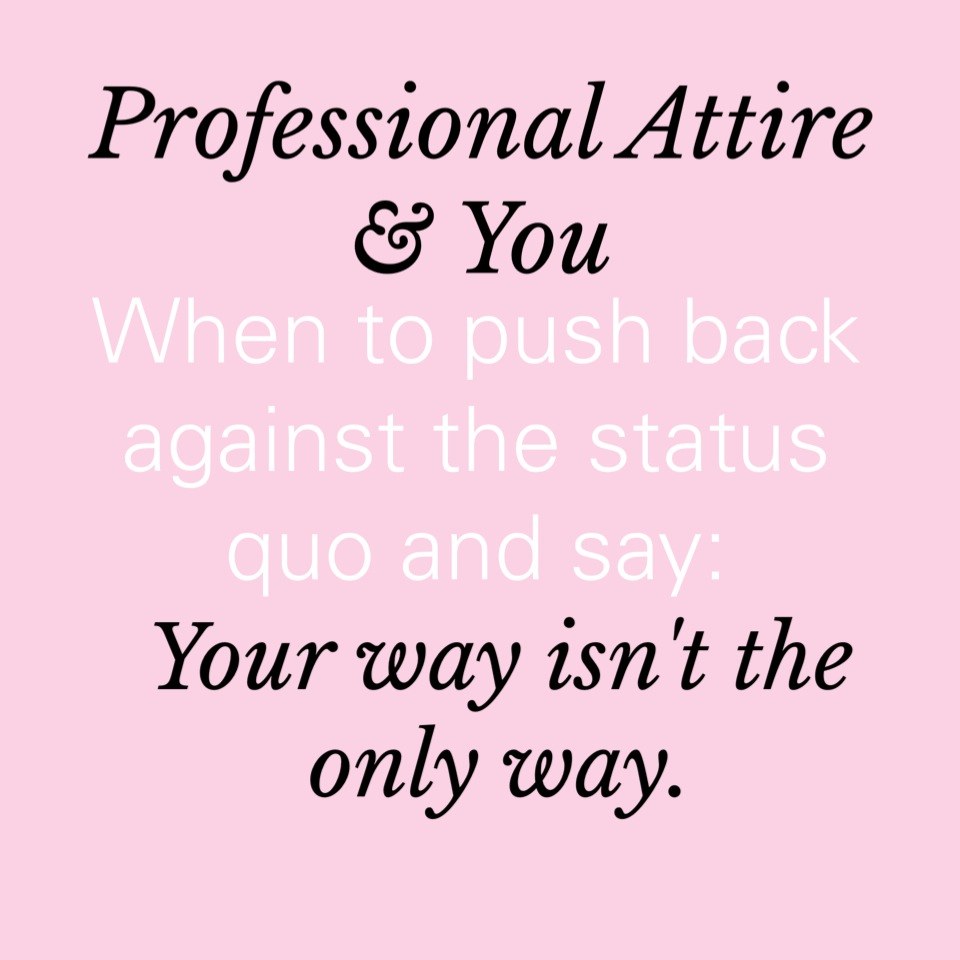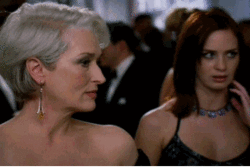Deciding on Appropriate Interview Attire.
On Monday we talked about preparing for your summer applications. Now let’s talk about looking the part during your interviews. The look you’re going for, regardless of the legal sector (private, public, government, etc) is: conservative. And the only real rule that applies to everyone, is that you have to wear a suit. Other than that, I’m a huge believer that as long as you look presentable, professional, and clean-that’s all that matters. Too bad I don’t run the world…

In reality, there are a lot more “rules” imposed on women and how we should dress when interviewing. If you want to truly play it safe, most schools will recommend that you wear a black skirt suit, with hose, low heels, no peep-toes, a white button up, very natural makeup, hair straight and pulled back, no gaudy jewelry, and if you’re engaged, don’t wear a ring if it has a large diamond and no tattoos, obvi.
This default “professional” appearance is usually easily achievable for those in power because this look was created in their image. But people of color, especially women of color, may not always easily fit into this mold. If you want to abide by these rules (because you need a job and have rent to pay), then do so–but don’t go out without a fight. I think it’s so important to, at minimum, ask yourself why you’re doing something and then be ok with the answer. Why is straight hair considered more professional than curly or kinky hair? Why should simple jewelry be a better option than wearing jewelry you may traditionally wear? Why are women expected to wear constraining garments (like hose) and limiting and dangerous pieces (like heels and skirts)? Why are women still being judged by our marital status? When you really delve into it, you realize that a lot of these requirements are kind of bogus. So I say, assess what being a “professional” means to you and then do what feels comfortable and right.
Now, one may wonder if there’s a real harm with conforming to these rules. I think so. These rules perpetuate norms that aren’t always helpful or healthy. I think about how we’re encouraged to wear heels. Yet, at many offices they ask women to also keep a pair of flats in case of an emergency. How safe is your attire if you have to change it before you need to escape the building? Why are women pushed to wear them, as if that’s the only way to dress? Another example is hair. I used to straighten it every day. This took up an extra hour of my time, it damaged my hair, and I had to buy extra products to fix and nourish it. Why did I do it? Because at school and other places, it was implied that my curly hair looked crazy, disheveled, and way too big for a courtroom. Most of all, I never saw female lawyers with hair like mine. It may not seem like a real problem, but essentially what the system was telling me was that my Latina hair and how it grows naturally wasn’t appropriate for the legal setting. How is that for an emotional punch?
After practicing for a few years, I decided to stop constantly straightening my hair. For one, it was too much hassle, but mostly I started taking active steps to breakaway from the default idea of what being a professional means if it didn’t apply to me. My hair stays curly, is still crazy, and way too big. But it’s my hair! That’s how it grows. Why should I change it so that it fits the narrow definition the status quo uses to define a woman lawyer? No. Instead, I push back against the status quo and say, “Your way isn’t the only way.”
Of course, when you’re starting out, you can’t always afford to risk an opportunity in an attempt to push boundaries. But deciding on how much you conform must be a personal decision, and most importantly, we shouldn’t judge women who do or do not conform to these standards.
In the next few months when you begin preparing for your interviews, you’ll be hounded with “tips” and “advice” (well-meaning, but often patronizing and paternalistic) about your appearance; you’ll be told what to do and what not to do, and some will be easy to apply to yourself and some may not. Decide how you’re willing to change, and then stand by your decision.


